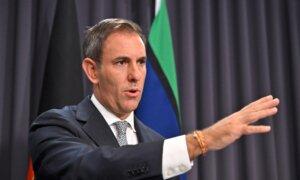Government Funding Workplace Placements for Students in Nursing, Teaching, and Social Work
The funding will provide a $319.50 weekly payment to around 68,000 higher education students, and over 5,000 VET students.
Students undergoing mandatory workplace placements will now receive payments through the Albanese government’s new Commonwealth Prac Payment.
The funding will offer a $319.50 (US$210) weekly payment to approximately 68,000 higher education students and over 5,000 VET students across various disciplines like teaching, nursing, social work, and midwifery, starting from July 1 next year.
This payment is based on the single Austudy rate and will serve as additional income to any existing financial support that students may already be receiving.
For example, social work students need to complete 26 weeks of unpaid placement before graduation, nursing students 20 weeks, and teaching students 16 weeks.
As a result, many Australian students face financial challenges during their clinical and professional placements as they are required to give up their jobs to meet course obligations.
“We are aware that many students are struggling due to the current cost-of-living pressures, which are creating more financial obstacles to their studies,” stated Luke Sheehy, the Chief Executive Officer of Universities Australia.
Education Minister Jason Clare mentioned that this initiative will help students cover their expenses while pursuing their educational qualifications, acknowledging the reality of placement poverty.
This cost-of-living measure aligns with the recommendations of the Australian Universities Accord panel to establish more straightforward and fairer funding for paid placements, a sentiment also supported by the Women’s Economic Equality Taskforce.
“Since the majority of students and workers in these essential sectors are women, this payment supports the Albanese government’s gender equality strategy and ensures a pipeline of future workers to address skill shortages in critical areas,” remarked Liam O’Brien, the Assistant Secretary of the Australian Council of Trade Unions.
Students with $100,000 loans will see their debts reduced by $4,485, while those with $50,000 loans will save $2,245.
Brendan O’Connor, the Minister for Skills and Training, also highlighted that the prac payment complements the government’s investment in Fee-Free TAFE to financially support Division 2 nursing students facing additional costs during compulsory clinical placements.
Psychologists Left Out
The government will reveal the costs associated with the prac payment in next week’s budget.
Treasurer Jim Chalmers stated that the May budget will be fine-tuned to address inflation concerns and alleviate the financial burdens faced by individuals.
The Australian Nursing and Midwifery Federation Tasmania showed its support for the federal government’s move and emphasized that a paid placement will enhance workforce participation.
Emily Shepherd, the Secretary of the ANMF Tasmanian Branch, pointed out, “Students face significant financial burdens, including loss of income from paid work and additional expenses like transportation, accommodation, childcare, uniforms, and essential training materials, which have contributed to a troubling trend of student attrition.”
Luke Sheehy, the CEO of Universities Australia, echoed similar sentiments, stating that this move will result in “fewer Australians having to choose between paying bills and pursuing the qualifications they need.”
However, the Australian Psychological Society (APS) expressed disappointment at being excluded from the Commonwealth Prac Payment and requested the government to reconsider its decision.
“Expecting provisional psychologists to undertake these placements without payment makes psychology unattainable for many students, putting more strain on the psychology workforce and ultimately harming patients in need of psychological care,” said APS President Catriona Davis-McCabe.
“The decision to exclude provisional psychologists from this program goes against the National Mental Health Workforce Strategy, the Universities Accord, and the Women’s Economic Taskforce.”





